Penguin Village
807.4375121211357m 0 2023-11-22
7 , Cheonbyeonjwa-ro 446beon-gil, Nam-gu, Gwangju
BTS mural and penguin bread
Since the 1970s and 1980s, 4 to 5 elderly people who lived in old villages started to decorate with scrap metal works, and it turned into a craft street and reached what it is today. There are two murals of j-Hope, whose hometown is Gwangju, and they are the only murals in the village that depict a specific person. It was produced with the support of Chinese fans in commemoration of his birthday in 2020. There is a mural near the village cooperative society cafe, so buying penguin bread at the cafe after viewing the mural is popular.
Zara - Chungjang-ro Branch [Tax Refund Shop] (자라 충장로점)
823.0879943056191m 0 2024-04-23
67, Chungjang-ro, Dong-gu, Gwangju
-
Yangnim-dong Penguin Village Craft Street (양림동 펭귄마을공예거리)
846.2855689924013m 17 2023-11-28
20-13 Ogiwon-gil, Nam-gu, Gwangju
Yangnim-dong Penguin Village Craft Street is a narrow alleyway located behind the Yangrim-dong Community Center. The village, named because of the way the elderly residents appear to waddle like penguins, has become an exhibition space of life in the 70s and 80s. Villagers cleaned up empty houses that had been burnt down and left unattended in the past, brought discarded items, and began displaying them on the village walls. "Let's be thankful for living at that time" was engraved on the village wall. It also has historical culture, such as the House of Choe Seunghyo, the House of Missionary Uilsa, and Owen Memorial Hall. The Penguin Jumak in the middle of the village was the residents' gathering place, selling small but necessary items. Various workshops, such as leather workshops, textile workshops, and carpentry workshops, are located on Craft Street, so you can purchase pretty crafts or experience upcycling crafts with a retro vibe in which the historical and the modern coexist.
Yangnim History & Culture Village (양림역사문화마을)
855.0128951749614m 5197 2023-11-28
7 Seoseopyeong-gil, Nam-gu, Gwangju
+82-62-676-4486
Yangnim History & Culture Village is located in the area where Western items and ideas first entered Gwangju over 100 years ago. As such, the neighborhood has a unique collection of Western architecture mixed with traditional hanok houses. There are also many houses of Christian missionaries, who facilitated the advancement of medicine and education in Gwangju. Some areas, such as Penguin Village, have been decorated with murals and outdoor exhibitions to promote art and tourism, helping the elderly locals to make a living.
1960 Cheongwonmomil (1960 청원모밀)
872.4507094638938m 8462 2020-05-04
174-1, Jungang-ro, Dong-gu, Gwangju
+82-62-222-2210
1960 Cheongwonmomil is a popular restaurant on Chungjang-ro Street, serving buckwheat noodles since 1960. It features white tables along with bright lighting. The representative menu is momil guksu, attracting people's appetite. Also, they offer kkakdugi (diced radish kimchi) made in-house.
Sansu-dong Hanok Experience Hall (Yeoro) [Korea Quality] / 산수동 한옥체험시설(여로) [한국관광 품질인증/Korea Quality]
872.3701250640543m 0 2021-03-25
16-17, Donggye-ro, Dong-gu, Gwangju
This hanok (traditional Korean house) guesthouse is located in a quiet residential area in Sansu-dong, Dong-gu, Gwangju.
There are four rooms in total, all with ondol (under-the-floor heating system). Seoseokdae and Jungmeorijae rooms can accommodate up to 4, while Jangbuljae and Ipseokdae rooms have a maximum occupancy of 3. Reservations are made for one guest, and guests under age 5 can stay free of charge. Each room has an attached bathroom and is equipped with a refrigerator. A common washing machine is located in the outer restroom. Breakfast features a pumpkin porridge made by the owner. There are no separate parking spaces in the building, but visitors can use the public parking lot nearby. Traditional cultural programs offered on site include natural dye, rice cake making, hand mirror making with pressed flowers, sweet rice balls/puffs making, succulent plant pot making, candle making, and fan making.
Gwangju Chungjang World Festival of Memories (광주 추억의 충장축제)
929.1879617581818m 0 2022-10-14
41, Geumnamno 1(il)-ga, Dong-gu, Gwangju
• 1330 Travel Hotline: +82-2-1330 (Korean, English, Japanese, Chinese) • For more info: +82-62-233-1007
This audition festival takes place in the city of culture and art, Gwangju, and has a grand prize of 1 million won. For approximately ten days, the festival is hosted in the areas of 5.18 Democracy Square and Asia Culture Center. There are also free zone stages all throughout Gwangju for street performances.
Han Hee-won Art Museum (한희원미술관)
936.860076056755m 0 2023-01-25
27-6, Yangchon-gil, Nam-gu, Gwangju
+82-62-653-5435
Han Hee-won Art Museum is a small hanok art museum in the back alley of Yangnim-dong.
Painter Han Hee-won grew up in Yangnim-dong, where he was influenced as a painter. In July 2015, he purchased a small hanok between the House of Yi Jang-u and the House of Choe Seunghyo and transformed it into an art museum to preserve and show the spirit of love, comfort, and art in his hometown, Yangnim-dong. An art museum with a low threshold approaching citizens with a humble mind, Han Hee-won Art Museum is open to anyone. Feel free to visit, appreciate the paintings, and be comforted through art.
House of Choi Seung-hyo (최승효가옥)
943.0572109630995m 13824 2023-03-08
29-4, Yangchon-gil, Nam-gu, Gwangju
+82-62-607-2332
The House of Choi Seung-hyo is a traditional residential building located on the southeastern slopes of Yangnimsan Mountain. The rectangular building is open to the east, has 8 kan (the space between two pillars) in the front and 4 kan to the sides, and is graced by a traditional hipped and gabled roof. Since the building was constructed in the 1920s, it offers a valuable glimpse into the architectural style of Korean houses at the end of the Japanese colonial period. Choi Sang-hyeon was an activist who offered his attic as a place of refuge for other activists.
Lee Jang-woo's House (이장우 가옥)
965.9557189569924m 15223 2021-12-16
21, Yangchon-gil, Nam-gu, Gwangju
+82-62-607-2333
Designated the first Gwangju Folk Material on March 20, 1989, Lee Jang-woo's House is an upper-class, tile-roofed house with a gate, storeroom, servants’ quarters, detached building, and main building. The building is estimated to have been constructed in 1899 and is overall a sturdy example of Korean architecture, well-preserved in its original state. The L-shaped main hall of the historic building is rather large and consists of (left to right) a wooden verandah, a small room, a hall, the main room, a kitchen, and another small room. The room doors are double doors with a sliding door on the inside and a hinged door on the outside. The hall also has partitions that can be hung up as necessary.

![Zara - Chungjang-ro Branch [Tax Refund Shop] (자라 충장로점)](http://tong.visitkorea.or.kr/cms/resource/85/2886885_image2_1.jpg)
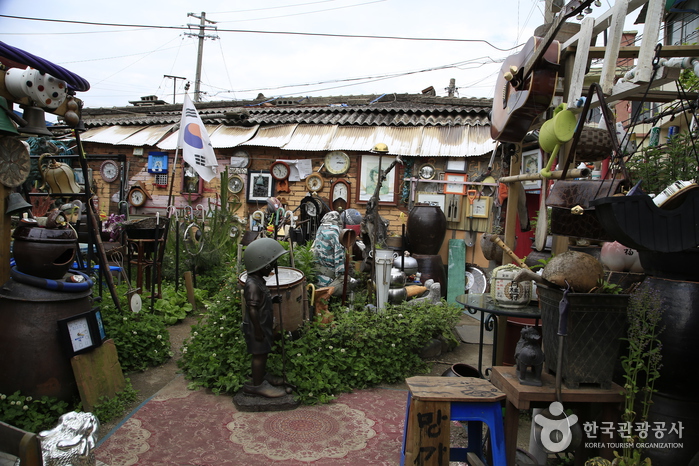

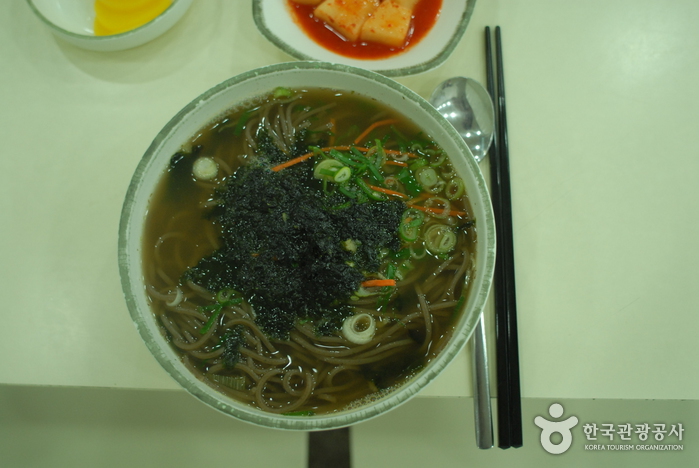
![Sansu-dong Hanok Experience Hall (Yeoro) [Korea Quality] / 산수동 한옥체험시설(여로) [한국관광 품질인증/Korea Quality]](http://tong.visitkorea.or.kr/cms/resource/74/2707574_image2_1.jpg)
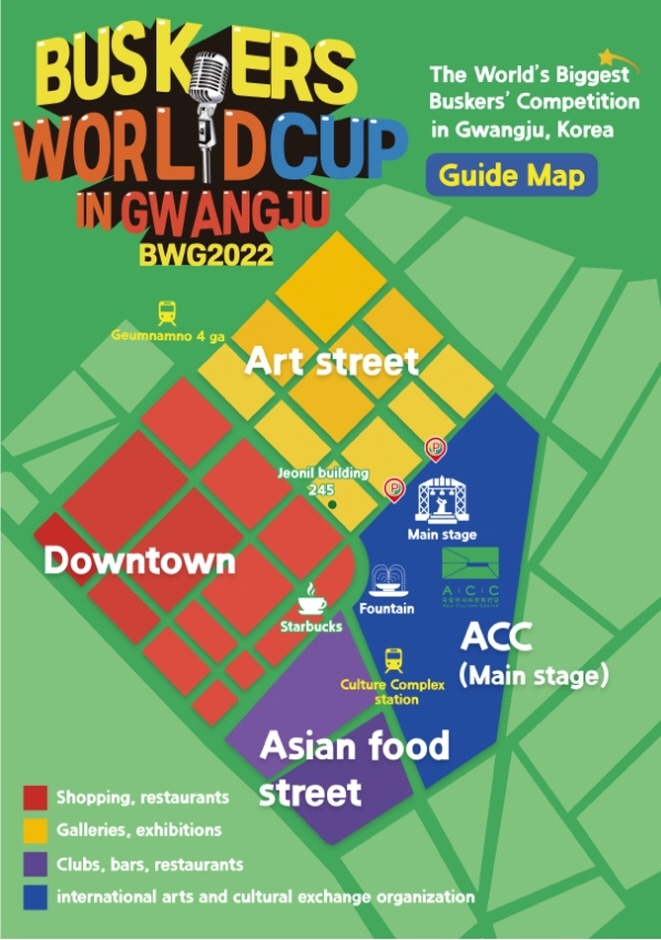
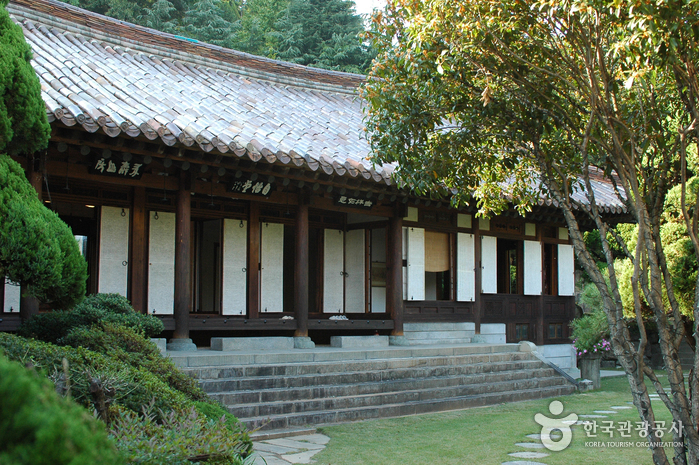
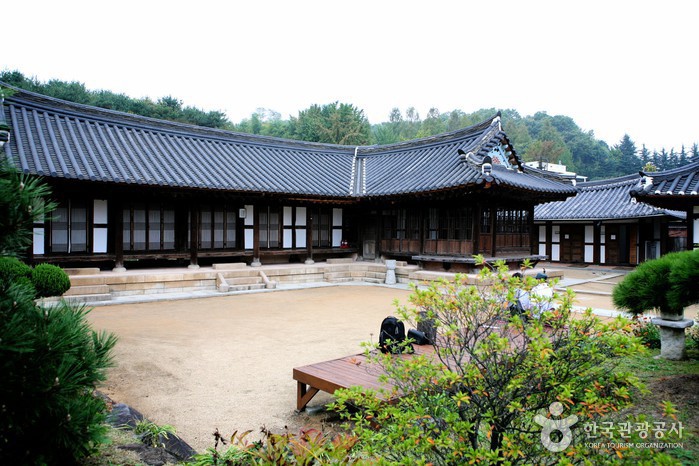
 English
English
 한국어
한국어 日本語
日本語 中文(简体)
中文(简体) Deutsch
Deutsch Français
Français Español
Español Русский
Русский